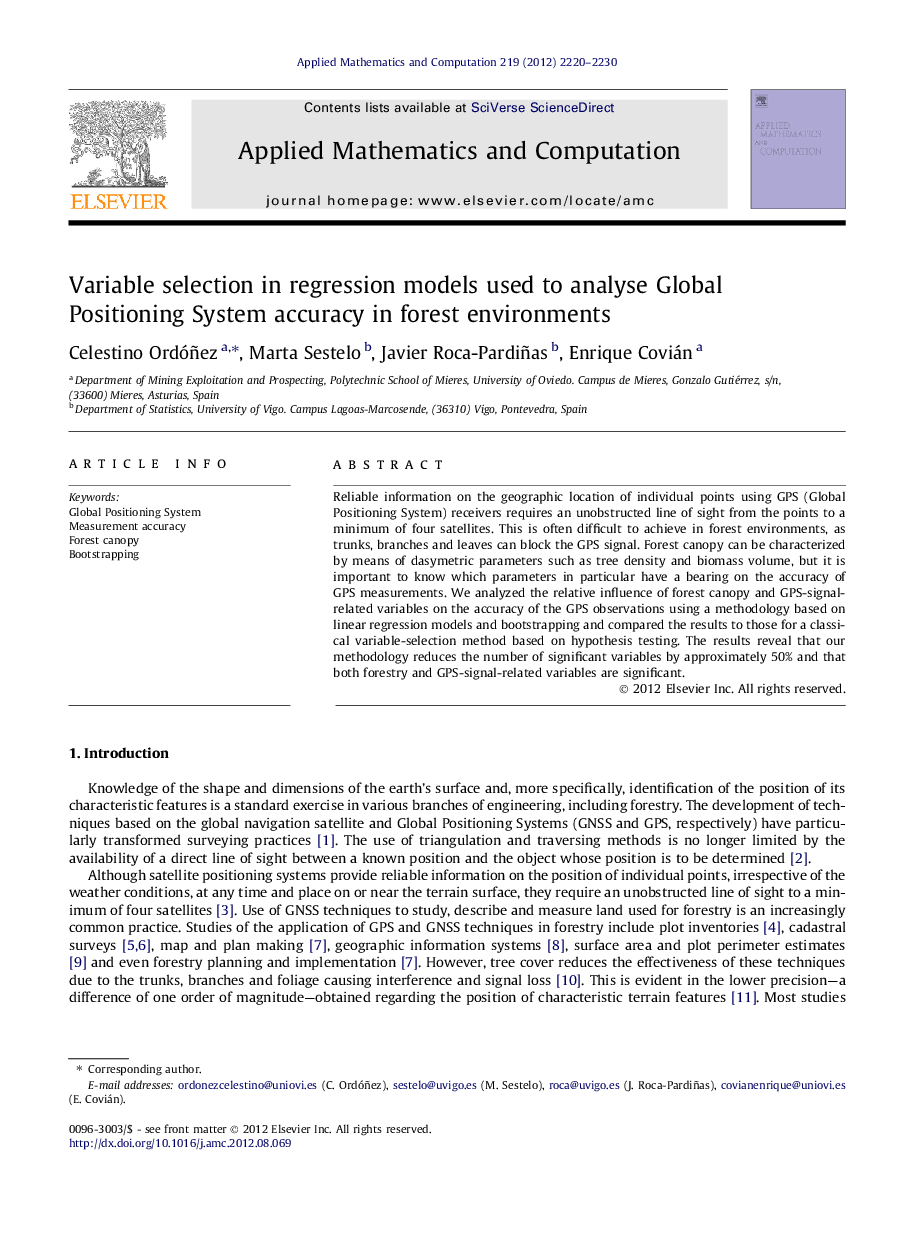| Article ID | Journal | Published Year | Pages | File Type |
|---|---|---|---|---|
| 4629564 | Applied Mathematics and Computation | 2012 | 11 Pages |
Abstract
Reliable information on the geographic location of individual points using GPS (Global Positioning System) receivers requires an unobstructed line of sight from the points to a minimum of four satellites. This is often difficult to achieve in forest environments, as trunks, branches and leaves can block the GPS signal. Forest canopy can be characterized by means of dasymetric parameters such as tree density and biomass volume, but it is important to know which parameters in particular have a bearing on the accuracy of GPS measurements. We analyzed the relative influence of forest canopy and GPS-signal-related variables on the accuracy of the GPS observations using a methodology based on linear regression models and bootstrapping and compared the results to those for a classical variable-selection method based on hypothesis testing. The results reveal that our methodology reduces the number of significant variables by approximately 50% and that both forestry and GPS-signal-related variables are significant.
Related Topics
Physical Sciences and Engineering
Mathematics
Applied Mathematics
Authors
Celestino Ordóñez, Marta Sestelo, Javier Roca-Pardiñas, Enrique Covián,
